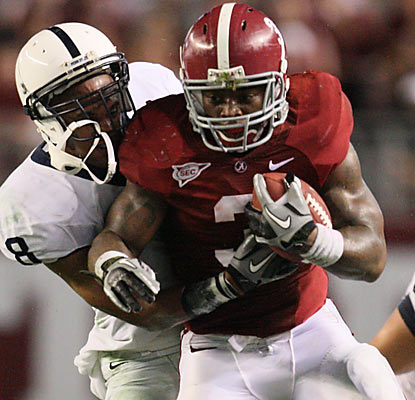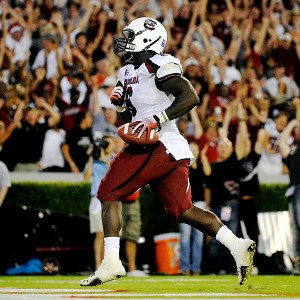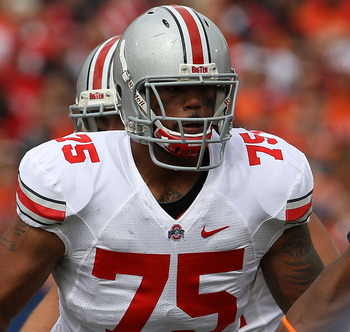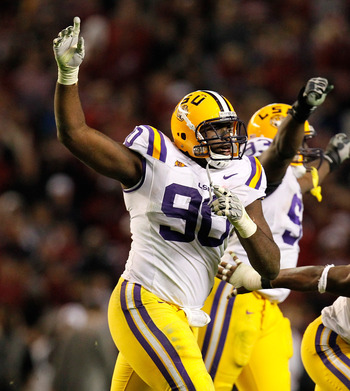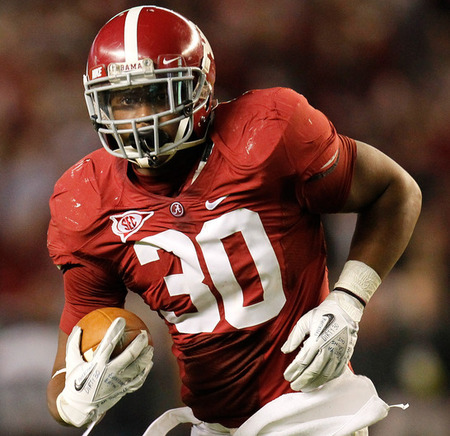
The Seahawks want more moments like this, even in the post-Lynch era
“We like the attitude that it brings, the mentality that it brings to run the football, to play run defense, and play tough on teams, and play it that way, so I don’t care which way the trends are going in the league. What’s best for us, is the way that we want to go at it.
“The way that we want to play, you need somebody on your team carrying the football. Without an attack guy it doesn’t feel the same. And he fits it just right, and he’s taken advantage of the emergence of these guys and the whole scheme, and he’s playing great football. We’re always going to continue to look for guys that add that to us.”
– Pete Carroll, 14th December 2011
Carroll has been pretty honest about the way he’s setting up his third (and probably final) tilt at the NFL. This is his vision. At a time when a lot of the NFL is turning to potent aerial attacks featuring big name quarterbacks, the Seahawks are using the run at the heart of their offense. His justification, noted on the same date as the quote above? “You don’t need to be like everyone else. I don’t want to be normal, you know?”
It took a little while to get going. Two high-profile coaching appointments, two offensive coordinators, three high draft picks, a big name splash in free agency and a calculated trade and Seattle has the semblance of a running game. The attack guy Carroll refers to above is Marshawn Lynch. He ended the 2011 season as possibly the league’s most effective running back, churning out yards and touchdowns and leading the offense to some degree of respectability. While offensive lineman fell to injury, Lynch continued to run with vigour. It’s fair to say that had his name been added to the list of casualties, the Seahawks offense would’ve been abominable. Again.
Lynch hits free agency this year but will almost certainly be retained. I understand Lynch isn’t too keen on the franchise tag, which isn’t unexpected. He’d rather agree a longer term deal for multiple seasons – just like virtually every other pending free agent who’s a candidate for the tag. DeAngelo Williams signed a $43m contract over five-years to stay in Carolina prior to the 2011 season, a likely starting point for Lynch in discussions. While I’m sure the Seahawks would love to strike a modest deal for more years, they won’t be making any heavy commitments to a position notorious for punishment. Shaun Alexander signed an 8-year, $62m contract extension to stay in Seattle six years ago. This regime will not be making a similar offer to Lynch.
The franchise tag for running back’s is expected to be around $7.7m in 2012, down from $9.6m in 2011 – a manageable figure for such a crucial part of Seattle’s offense. At this stage, the tag looks likely for Marshawn. It allows the team an opportunity to buy another year and re-access the situation in twelve months. Considering he’ll only turn 26 in April, agreeing a multi-year deal in 2013 isn’t out of the question if he continues to perform at a high level. However, the tag also gives the Seahawks insurance if Lynch disappoints.
Rotoworld’s Evan Silva had some interesting things to say on Twitter yesterday:
Free agency buyer beware: Marshawn Lynch. Avg’d 3.87 YPC in first 61 games. 4.45 YPC in last 11 (Contract yr). Already 1,137 career carries.
Lynch’s conditioning, especially in offseasons, has long been an issue. Ideal franchise tag candidate. Keep him hungry, in contract year.
It’s a fair point on Lynch’s carries and his physical running style could have an impact earlier in his career than other more elusive backs. The tag would indeed keep him hungry and if he can put back-to-back productive seasons on the negotiating table, the Seahawks may be duty bound to reward him or let him test free agency next year. This offense needs its attack guy and Lynch is the team’s MVP on offense right now. So why is the front office going to spend a high pick on a running back?
Commitment to the run
Pete Carroll has made it clear that the run game will make or break this offense, at least until they find ‘the one’ at quarterback. There’s no grey area here, the Seahawks want to run the ball. Most of their investment – be it in the draft, coaches or free agency – has been focused on setting up an effective running game. They can’t move forward knowing they’re an injury to Marshawn Lynch away from losing that identity again. Although many people believed the tepid 6-3 defeat in Cleveland was a review of Tarvaris Jackson’s effectiveness and Charlie Whitehurst’s ineptitude, it was mainly an insight into Seattle’s offense minus-Lynch. The Seahawks cannot risk being caught short and with a lot of talent available at running back in rounds 1-3, it will be a target area.
Insurance
One way to keep Lynch fresh is to limit his carries. When the Seahawks subbed in Leon Washington and Justin Forsett in 2011, there was a noticeable drop in effectiveness. If Seattle can find someone who can help the team manage Lynch a little more carefully, that will be a big boost for their star. I’m quite sure this team isn’t looking for a ‘change of pace’ back in this year’s draft, they’ll probably be going after another attack guy. A player who can work with Lynch as a duo, a partnership that constantly keeps team’s guessing and Seattle’s offense rolling. And if Lynch was to suffer an injury, they’ll need someone who can take up the slack.
Leverage
If the Seahawks can draft a running back who can lead the offense, it’ll eliminate the dependency on Marshawn Lynch. If they don’t want to commit multiple years in 2013 to a running back with even more miles on the clock, they’ll have the option to move on with a younger player. The best team’s in the league stay at the top by being a step ahead of the game. It’s not necessarily always about filling holes in the NFL, rather maintaining and enhancing your strengths to overcome weaker areas of the team. While some people may argue a high pick on a running back is a luxury, it may actually be one of the more intelligent moves they could make this year to maintain a strong running game.
Talent
This draft is top-heavy for running backs. Trent Richardson is a star in the making who could quickly become the best back in the league. The Seahawks will consider drafting him if he’s available at #11 or #12, creating possibly the most fearsome duo of running backs in the history of the league. In round two, the likes of Doug Martin, Lamar Miller, Chris Polk and David Wilson offer excellent value and could be deemed BPA with the team’s second choice. You can find effective runners without top-level investment, but this is a draft where a GM or coach can be forgiven for taking a running back early. The talent is there this year.
A lot of fans will complain if or when the Seahawks do select a running back within the first two days of the draft this year. Quarterback is the consensus gaping hole on the roster – and rightly so too. It’s also a situation that can’t be forced and while many would like to see a quarterback drafted almost for the sake of finally addressing the situation early, the facts are quite simple… There won’t be a quarterback worth the pick at #11 or #12, but Trent Richardson would be a steal in that range. There may not be a quarterback worth a high second round pick, but a player like Doug Martin or (if Richardson is the R1 pick) a defensive player like Vinny Curry could be deemed BPA at a position of need.
I’m sure the team will add viable competition and maybe even a new starting QB at some stage. That could happen via trade long before the draft takes place – we’ll see what happens in March. Yet the way this draft could unfold, it may just be that the Seahawks are left waiting another year before making the big draft splash at the position and appeasing the majority of the fanbase.
It’s going to be more of the same in 2012 in terms of a heavy run focused offense and the Seahawks have committed to a strong running game to succeed. The rookie pay scale has changed the complexion of the draft, making a high pick on a running back much more viable than it has been before. Richardson would be a bargain in round one, offering instant production and a means for Seattle to build on it’s run philosophy while preparing for the possibility of life without Lynch. Although most mock drafts at the moment lazily have the Seahawks drafting Ryan Tannehill (won’t happen), it’s time to concentrate on the front seven and the running back position.






